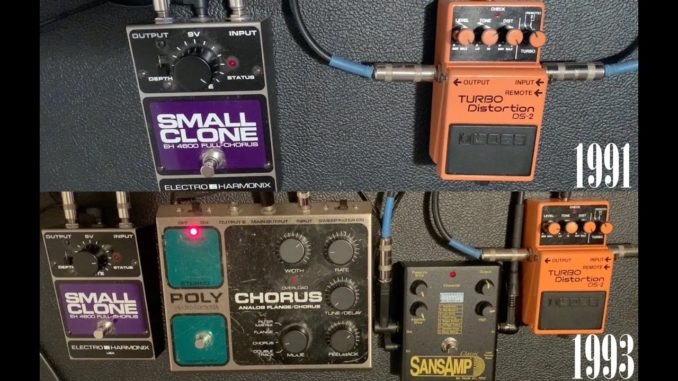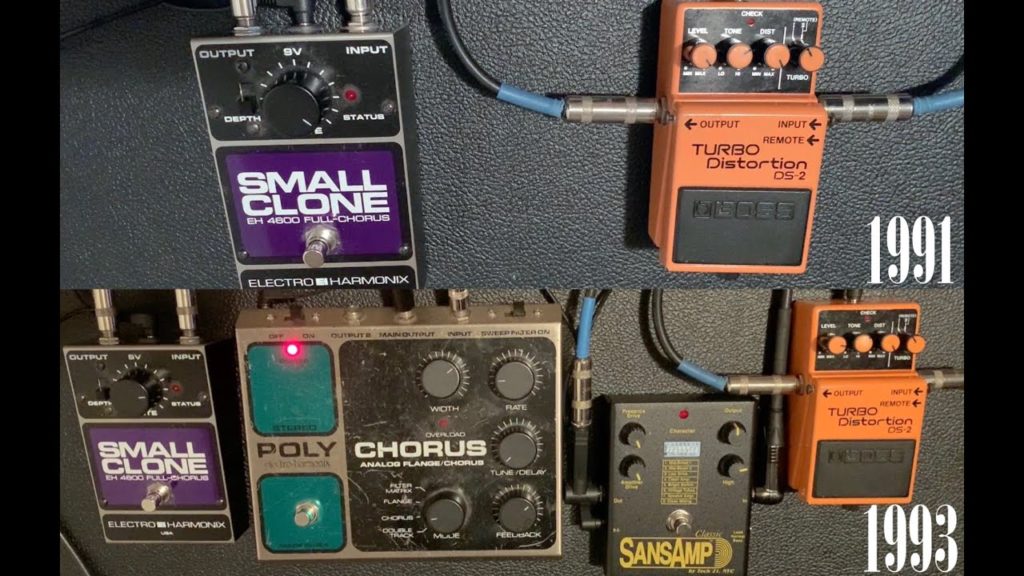
More than just a band, Nirvana was a sonic revolution. Led by the enigmatic Kurt Cobain, their music redefined the 90s with a raw, grungy sound that reverberates to this day. But what went into crafting that iconic tone? This guide dissects the secrets behind Cobain’s guitar alchemy, exploring his arsenal of pedals, guitars, and amps.

Unraveling the Sound of Nirvana: A Deep Dive into Cobain’s Gear and Tone
From Gritty Distortion to Ethereal Chorus: Diving into Cobain’s Pedalboard
- Boss DS-1: The backbone of Cobain’s distortion, this pedal served up that unmistakable crunch in classics like “Smells Like Teen Spirit.”
- Electro-Harmonix Small Clone: This chorus pedal conjured the haunting, watery textures that permeate Nirvana’s sound, adding an otherworldly dimension to tracks like “Come As You Are.”
- EHX Big Muff Pi: For the thick, fuzzed-out distortion in songs like “In Bloom,” the Big Muff was a weapon of choice.
- Pro Co Rat: Adding a biting edge to solos and leads, the Rat was another key distortion pedal in Cobain’s arsenal.
- Tech 21 SansAmp GT2: Simulating the roar of a cranked tube amp, this pedal helped Cobain achieve a wide range of tones and was a crucial component of his sound.
Spotlight on the Small Clone: The Chorus that Haunts
This iconic pedal holds a special place in Nirvana’s sonic landscape. Its warm, swirling chorus effect added a haunting, ethereal quality to Cobain’s guitar, contributing to the psychedelic undertones in many of their tracks. Just listen to the intro of “Come As You Are” – the Small Clone’s signature sound paints an entire sonic landscape.
Beyond the Pedals: Cobain’s Guitars, Tools of His Trade
While various guitars graced Cobain’s hands throughout his career, a few became synonymous with his image and sound:
- Fender Mustang: Short-scale and distinctive, this guitar was perhaps the most iconic of Cobain’s collection, featuring prominently in countless Nirvana performances.
- Fender Jaguar: Offering a unique design and versatile tonal options, the Jaguar allowed Cobain to explore different sonic territories.
- Martin D-18E Acoustic: In Nirvana’s “MTV Unplugged” performance, this acoustic guitar showcased Cobain’s ability to adapt his style and create a softer, more intimate atmosphere.
Amplifying the Legacy: Cobain’s Trusted Amp Duo
Two amp models stand out as crucial contributors to Cobain’s sound:
- Fender Bassman: This classic Fender amp provided a clean, warm foundation for Cobain’s effects pedals to work their magic, adding depth and character to his overall tone.
- Mesa/Boogie Studio Preamp: For the heavy, grungy foundation of Nirvana’s sound, this preamp delivered powerful distortion, shaping the band’s signature sonic aggression.
More Than Just Gear: The Enduring Impact of Cobain’s Sound
Cobain’s pedalboard, guitars, and amps were not just tools of the trade, but instruments that shaped an era. His innovative approach to crafting guitar tones and his fearless exploration of effects continue to inspire musicians and fans worldwide.
But Cobain’s impact extended far beyond his gear. His music and lyrics, filled with introspection and social commentary, made him a voice for a generation. His tragic death in 1994 left a void in the music world, but his influence remains as potent as ever. Cobain’s legacy lives on in the hearts of those who were touched by his music, his unique approach to the guitar, and his unwavering authenticity.
Audio Engineer Interviews
FOH Engineer Garry Brown (Phish, Trey Anastasio Band, Oysterhead)
Behind the Live Sound of Coldplay with Daniel Green
Red Hot Chili Peppers Sound Engineer – Dave Rat 2016 Set up
Antony King – Front of House Engineer for Depeche Mode
Gavin Tempany – FOH Tame Impala, Mark Knopfler, Hans Zimmer, Kylie and Eskimo Joe
Analogue vs Digital, How to ‘Hear’ when Mixing with Andrew Scheps
